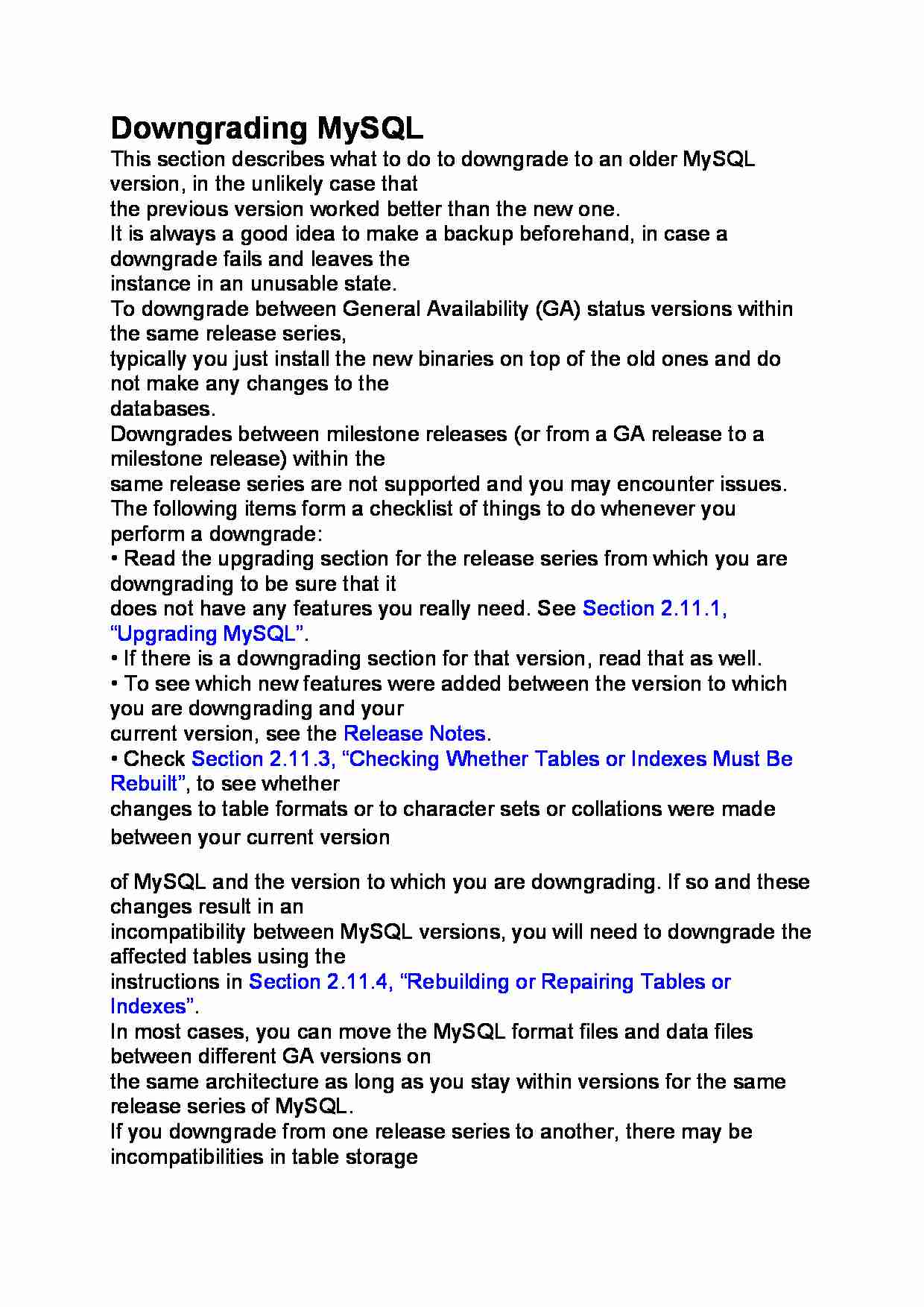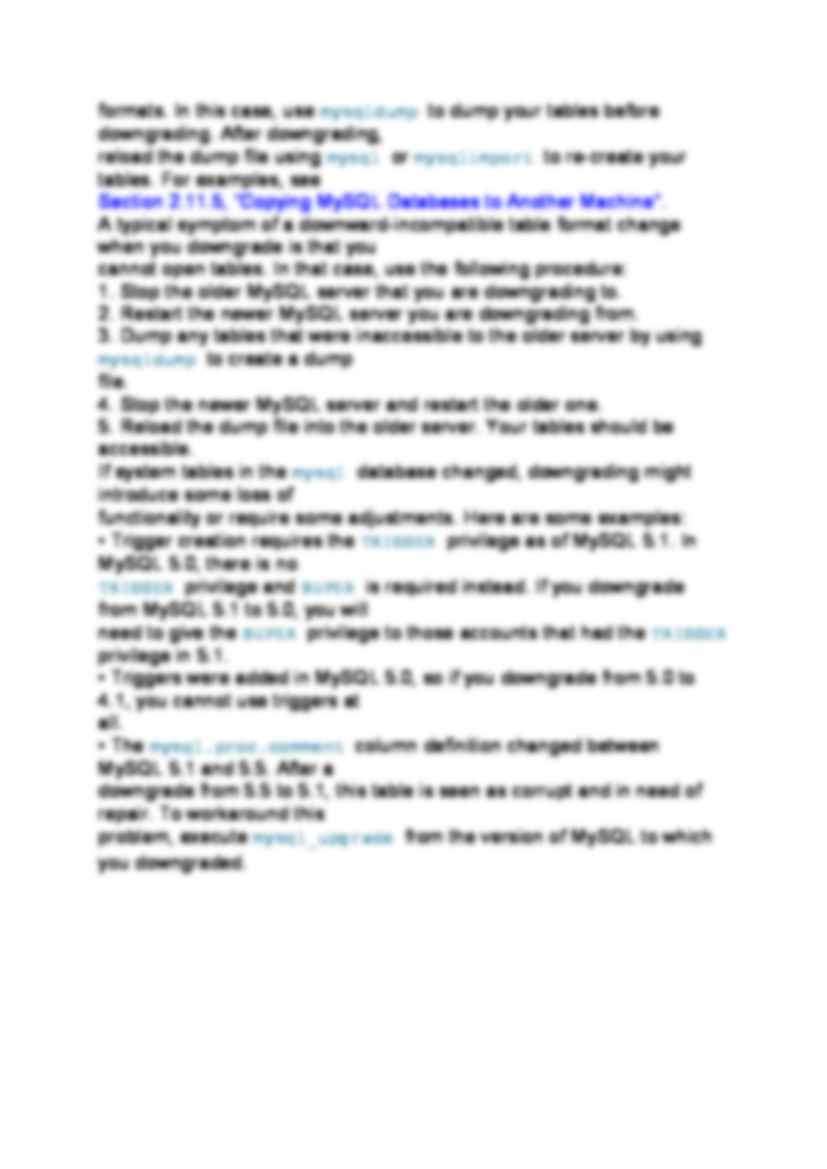To tylko jedna z 2 stron tej notatki. Zaloguj się aby zobaczyć ten dokument.
Zobacz
całą notatkę


Downgrading MySQL
This section describes what to do to downgrade to an older MySQL version, in the unlikely case that
the previous version worked better than the new one.
It is always a good idea to make a backup beforehand, in case a downgrade fails and leaves the
instance in an unusable state.
To downgrade between General Availability (GA) status versions within the same release series,
typically you just install the new binaries on top of the old ones and do not make any changes to the
databases.
Downgrades between milestone releases (or from a GA release to a milestone release) within the
same release series are not supported and you may encounter issues.
The following items form a checklist of things to do whenever you perform a downgrade:
• Read the upgrading section for the release series from which you are downgrading to be sure that it
does not have any features you really need. See Section 2.11.1, “Upgrading MySQL”.
• If there is a downgrading section for that version, read that as well.
• To see which new features were added between the version to which you are downgrading and your
current version, see the Release Notes.
• Check Section 2.11.3, “Checking Whether Tables or Indexes Must Be Rebuilt”, to see whether
changes to table formats or to character sets or collations were made between your current version
of MySQL and the version to which you are downgrading. If so and these changes result in an
incompatibility between MySQL versions, you will need to downgrade the affected tables using the
instructions in Section 2.11.4, “Rebuilding or Repairing Tables or Indexes”.
In most cases, you can move the MySQL format files and data files between different GA versions on
the same architecture as long as you stay within versions for the same release series of MySQL.
If you downgrade from one release series to another, there may be incompatibilities in table storage
formats. In this case, use mysqldump to dump your tables before downgrading. After downgrading,
reload the dump file using mysql or mysqlimport to re-create your tables. For examples, see
Section 2.11.5, “Copying MySQL Databases to Another Machine”.
A typical symptom of a downward-incompatible table format change when you downgrade is that you
cannot open tables. In that case, use the following procedure:
1. Stop the older MySQL server that you are downgrading to.
2. Restart the newer MySQL server you are downgrading from.
3. Dump any tables that were inaccessible to the older server by using mysqldump to create a dump
file.
... zobacz całą notatkę




Komentarze użytkowników (0)